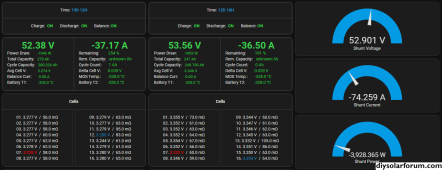rmharrington
New Member
Excellent. Last points, and I will leave you be.1) No, when the grid goes down the inverter will isolate the grid input, and not feed any power back.
2) Yeah the ground from the main to the sub panel is good enough, using the sub panel is a good choice for centralizing your grounds on this system.
1) Would a grid connect to the inverters continue feeding a subpanel even if the inverters went bad.?
2) If not, then feeding the grid into the subpanel for an either/or seems my best choice. Eitherway, can you recommend a panel with 20 breaker slots along with a slider switch that would permit me to switch completely off the solar and back to the grid if necessary?
3) Would twin 70amp breakers, one set for the inverter connection and one set for the grid be reasonable for my system?
I've got eighteen 345 volt 9 amp panels on two strings, one to each inverter. I'm thinking of handling 110 volt electrical outlets and lights in the den, kitchen, and maybe one other room, along with running a 1100 watt microwave when necessary. Later, if all goes well, I'll add another battery and try to include 220 connections for my well and hot water heater.
No other heavy pulls.
You've been lots of help and greatly calmed my nerves. If you don't mind sharing a bit about your credentials, I you've resolved most all my remaining concerns. If you were near Concord, NC, I'd hire you to finish this task for me.
Thanks for going above and beyond.




